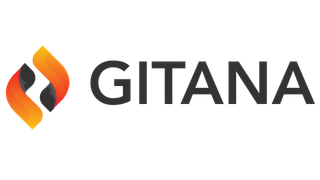Found 208 results for "content-models definitions features"
The search executed in 0.0015 seconds. That's fast.

|
Gitana 4.0 / Developers / User Interface Customization / Contexts / model-subcontextDocumentation Reference Explore model subcontext with detailed content models, types, associations, and features for your projects. (Gitana 4.0)
Score: 1.9697
|

|
Gitana 4.0 / Reference / Types / Workflow ModelDocumentation Reference Explore the comprehensive Workflow Model documentation, including properties, methods, and detailed schema for efficient development. (Gitana 4.0)
Score: 1.9678
|

|
Gitana 3.2 / Guide / Guide / User Interface / Projects / Copy a ProjectDocumentation Reference Easily duplicate any project within our platform using the step-by-step Copy Project Wizard. (Gitana 3.2)
Score: 1.9577
|

|
Gitana 4.0 / User Interface / Projects / Copy a ProjectDocumentation Reference Effortlessly duplicate projects with our step-by-step guide. Start by selecting your project and copy with ease. (Gitana 4.0)
Score: 1.9577
|

|
Gitana 3.2 / Guide / Guide / Getting Started / WorkspacesDocumentation Reference Collaborate efficiently by creating and managing content within isolated workspaces, ensuring seamless team interaction. (Gitana 3.2)
Score: 1.9221
|

|
Gitana 4.0 / Getting Started / Working with Content / BranchesDocumentation Reference Manage content with branches in Cloud CMS, enabling isolated changes, teamwork, and streamlined collaboration. (Gitana 4.0)
Score: 1.9221
|

|
How does Cloud CMS compare to DIY (do-it-yourself)?Support Article Explore the pros and cons of Cloud CMS vs DIY solutions to make an informed decision for your business needs. (Support 1.0)
Score: 1.9208
|

|
Gitana 4.0 / Reference / Types / NodeDocumentation Reference Explore the structured representation of nodes and associations in a repository. Enhance content management skills with interactive APIs. (Gitana 4.0)
Score: 1.9198
|

|
Safe Evolution of Content Models with Branching and AIBlog Post Embrace safer content model evolution using branching and AI for controlled, automated schema changes and seamless integration with DevOps practices.
Score: 1.9176
|

|
Gitana 3.2 / Guide / Guide / User Interface / Add-onsDocumentation Reference Enhance Cloud CMS with add-ons to integrate YouTube, Vimeo, and Google Docs, boosting user interface and content capabilities. (Gitana 3.2)
Score: 1.8565
|

|
Gitana 4.0 / User Interface / Add-onsDocumentation Reference Enhance your Cloud CMS with add-ons for seamless integration with services like YouTube and Google Docs. (Gitana 4.0)
Score: 1.8565
|

|
Gitana 3.2 / Guide / Guide / User Interface / Create/Edit ContentDocumentation Reference Edit and manage content easily with folders, search, tags, and comments in Cloud CMS. (Gitana 3.2)
Score: 1.8545
|

|
Use Case: Healthcare - GitanaWeb Page Use Case: Healthcare - Gitana Status Releases Support Platform Platform Manage, collaborate, search and distribute your highly-structured content across branches, versions and workflow-driven lifecycle. Cloud CMS Create, Approve and Publish quality content to production on-time. Easy editorial and workflow tools let your best work reach your customers. Automation Automate your content creation and approval flows while taking advantage of AI services to enhance and curate content. Publishing Sour
Score: 1.8524
|

|
Gitana 3.2 / Guide / Guide / Forms / Fields / Node PickerDocumentation Reference Effortlessly filter, sort, and select nodes with our versatile Node Picker, supporting single and multi-node selection. (Gitana 3.2)
Score: 1.8184
|

|
Gitana 4.0 / Forms / CMS / Fields / Node PickerDocumentation Reference Effortlessly filter, sort, and pick nodes with Node Picker's customizable modal for single or multi-node selection. (Gitana 4.0)
Score: 1.8184
|

|
Gitana 3.2 / Guide / Guide / Docker / Container Services / Amazon ECSDocumentation Reference Amazon ECS offers seamless container orchestration with AWS integrations, ideal for deploying and scaling apps efficiently. (Gitana 3.2)
Score: 1.8089
|

|
Pricing: Hosted Options - GitanaWeb Page Pricing: Hosted Options - Gitana Status Releases Support Platform Platform Manage, collaborate, search and distribute your highly-structured content across branches, versions and workflow-driven lifecycle. Cloud CMS Create, Approve and Publish quality content to production on-time. Easy editorial and workflow tools let your best work reach your customers. Automation Automate your content creation and approval flows while taking advantage of AI services to enhance and curate content. Publishing S
Score: 1.7837
|

|
Gitana 3.2 / Guide / Guide / API / StatisticsDocumentation Reference Enable and enhance node statistics tracking in Cloud CMS with customizable features and server-side rules. (Gitana 3.2)
Score: 1.7798
|

|
Gitana 4.0 / Developers / API / StatisticsDocumentation Reference Optimize your content with Cloud CMS by enabling detailed node statistics, ensuring precise data aggregation and analysis. (Gitana 4.0)
Score: 1.7798
|

|
Gitana 4.0 / User Interface / User Interface / Create/Edit ContentDocumentation Reference Manage and edit content seamlessly with powerful tools for viewing, editing, tagging, and attaching files. Optimize your workflow. (Gitana 4.0)
Score: 1.7616
|

|
Gitana 4.0 / Content Engine / NodesDocumentation Reference Explore comprehensive articles on content nodes covering attachments, data lists, locking, and reports in your branch. (Gitana 4.0)
Score: 1.7582
|

|
Pricing: Self Managed Options - GitanaWeb Page Pricing: Self Managed Options - Gitana Status Releases Support Platform Platform Manage, collaborate, search and distribute your highly-structured content across branches, versions and workflow-driven lifecycle. Cloud CMS Create, Approve and Publish quality content to production on-time. Easy editorial and workflow tools let your best work reach your customers. Automation Automate your content creation and approval flows while taking advantage of AI services to enhance and curate content. Publis
Score: 1.754
|

|
Gitana 4.0 / Content Engine / Services / Node ServicesDocumentation Reference Discover integrated content services managing your nodes efficiently with rules, actions, and content policies. (Gitana 4.0)
Score: 1.7416
|

|
Gitana 3.2 / Guide / Guide / UI Developers Guide / Contexts / document-subcontextDocumentation Reference Explore document insights with features like overview, preview, properties, translations, attachments, and email templates. (Gitana 3.2)
Score: 1.7047
|

|
Gitana 4.0 / Developers / User Interface Customization / Contexts / document-subcontextDocumentation Reference Explore comprehensive document management tools, from editing to deployment, and enhance your workflow with advanced features. (Gitana 4.0)
Score: 1.7047
|
